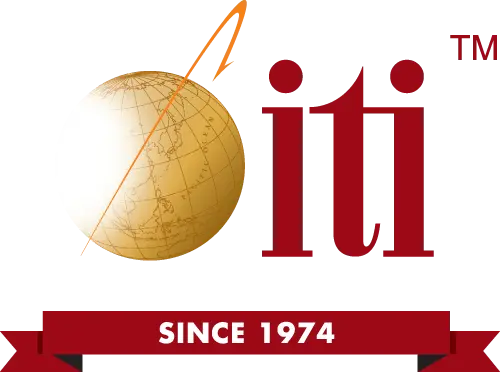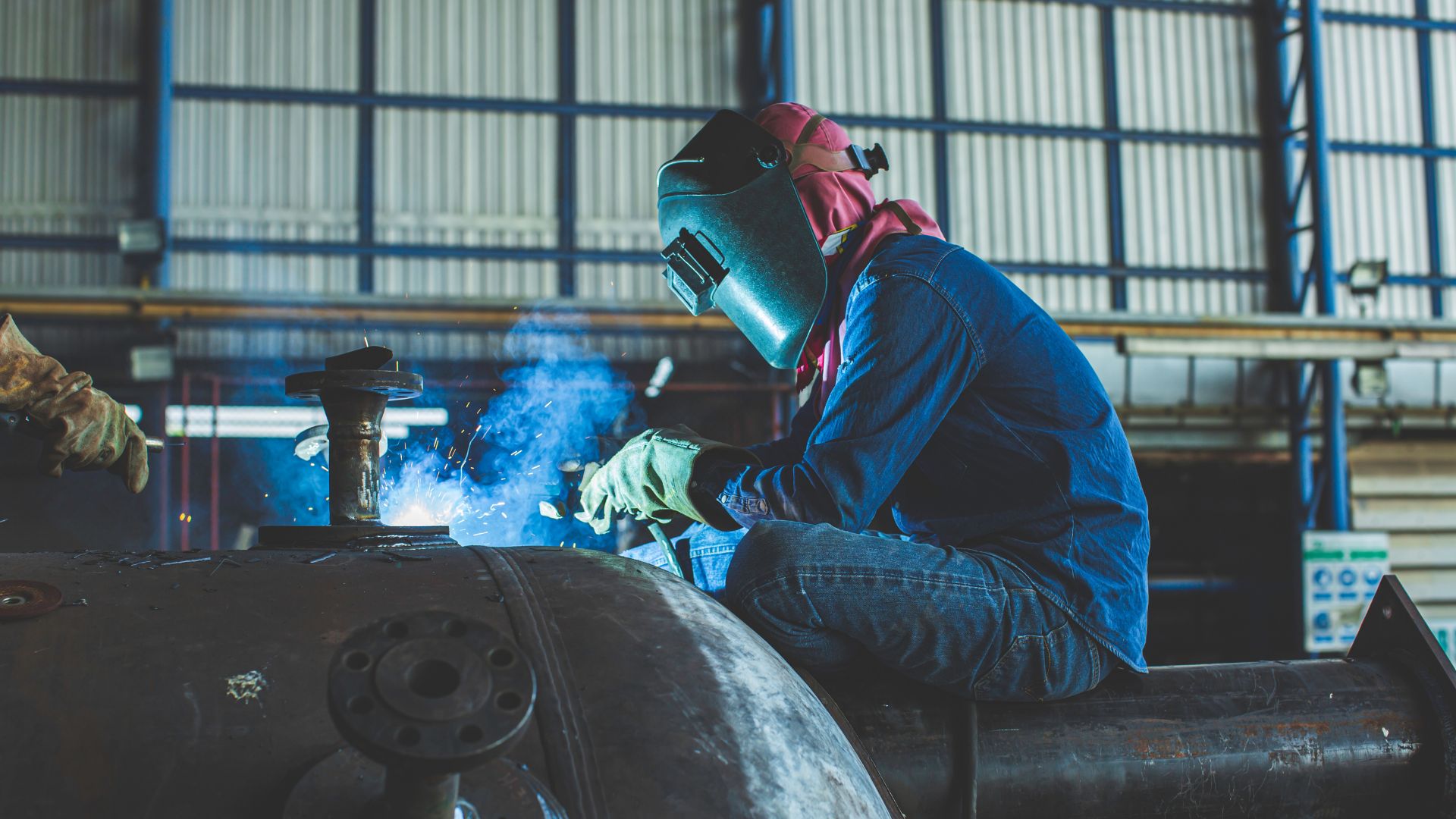Companies launching new products that have never used overseas manufacturing might wonder how to find a manufacturer in China. Manufacturing in China offers many benefits, such as lower costs, access to a variety of manufacturing disciplines, and a massive capacity to scale.
However, manufacturing in China also requires careful planning, research, and management to overcome the challenges and risks involved, such as cultural differences, quality issues, intellectual property protection, and trade barriers.
Manufacturing in China is not a one-size-fits-all solution but a strategic decision that depends on your product, industry, and goals. Let’s explore everything you need to know about manufacturing in China, from the benefits and drawbacks to the best practices and tips.
What the Chinese Manufacturing Process Entails
If you want to manufacture your products in China, be prepared for the following steps. ITI Manufacturing can also assist you so you know what to expect.
1. Sourcing
Do extensive research and investigation to compare different options and find the best factory to make your products. Simply doing internet research can be extremely risky, as social media and company websites can be very misleading. We recommend you partner with manufacturing experts with significant experience working with Chinese companies. Preferably, you’ll want to partner with a company with in-country employees who understand specific manufacturing companies’ different manufacturing regions and capabilities.
2. Communication and Negotiation
Communicate and negotiate with your chosen factory and agree on a fair contract for both parties. Much can be lost in translation and across cultures, even with the extensive translation resources available to us today. Again, you’ll want to take advantage of a company specialized in dealing with overseas manufacturers. This will benefit both you and the factory as you’ll have the advantage of communicating in your native language and time zone, and the foreign factory will also have the advantage of working with someone they are familiar with. The ideal scenario, once again, would be to partner with a company that has employees both domestically and in China.

3. Specifications and Samples
Send the factory the product details, such as CAD drawings, bill of materials, and samples or prototypes. Before starting production, the factory should send back some pre-production samples for you to evaluate. The pre-production sample process should continue until you are satisfied that the factory can produce your product to your standards.
4. Production
Sample approval should start the production process. The production should follow a schedule that you agreed on. Partnering with a company that provides consistent communication throughout your production process will ensure you are aware of the situation.
5. Quality Assurance
Make sure that the product meets your quality standards. Inspect the product during and after production.You want to avoid taking the risk of the manufacturing location deciding whether your products meet your quality requirements. At a minimum, you’d want the factory to send a production sample ahead of shipping your full order. Ideally, you should partner with a company with its own inspectors in-country. Having third-party inspectors for your order to your requirements prior to shipment will help alleviate expensive mistakes.
6. Shipping and Logistics
Arrange the packaging, labeling, customs, and shipping of the product to your location in the U.S. Here’s another area where trying to handle this internally to your organization can lead to costly mistakes. Applying the correct Harmonized Tariff Code is extremely important and will avoid expensive penalties down the road. You also want to prevent a foreign entity from handling import paperwork on your behalf based on the risk of designating the wrong tariff code, subjecting your company to large fines.
Is Your Product Best Suited for Chinese Manufacturing?
One of the most important decisions that manufacturers have to make is where to produce their products. China is often considered a popular destination for overseas manufacturing, but is it the best option for your product? Here are some factors that you should consider before choosing Chinese manufacturing.
Cost
China has a large and relatively inexpensive labor force, which can lower production costs significantly. However, you should also consider other expenses, such as shipping, tariffs, and quality control. Depending on your product, these costs can outweigh the benefits of low labor costs.
Quality

China has improved its manufacturing quality standards over the years but still needs to catch up with other countries regarding consistency and reliability for highly-engineered industries such as aerospace, automotive, medical, and defense. Without vetting the appropriate partner, you may encounter unexpected issues such as defective products, delayed deliveries, or poor supplier communication. To avoid these problems, research your potential manufacturers’ reputation and track record and conduct regular inspections and audits. Partnering with an outsourced manufacturing specialist will help mitigate these risks.
Quantity
China is well-known for its mass production capabilities, which can offer you economies of scale and lower unit costs. However, this also means that you may have to deal with high minimum order quantities (MOQs), the lowest number of units a manufacturer is willing to produce for each order.
If your product demand is low or uncertain, you may have excess inventory, storage costs, or waste. Estimate your product demand carefully and negotiate with your manufacturer to find the optimal MOQ. Alternatively, you can look for manufacturers specializing in small-batch production.
The Top Cities for Chinese Manufacturing
Some of the top cities for manufacturing in China are:
Shenzhen
Shenzhen is the manufacturing hub for electronics and home to the world’s second busiest port. Industries such as telecommunication and computers work actively in Shenzhen.
Guangzhou
Guangzhou’s top manufacturing industries are automotive, petrochemical, and electronics—leading automotive brands like Honda, Nissan, and Toyota manufacture in Guangzhou.

Ningbo
This is one of China’s national logistic hubs and boasts a diverse manufacturing base in many industrial areas, such as chemicals, electrical machinery, telecom equipment production, and IT devices. Ningbo also has a large port that offers a direct route to Taiwan.
Qingdao
Qingdao is one of China’s major economic engines, with diverse manufacturing in many industrial areas such as biopharmaceuticals, electronics, fine chemicals, petrochemicals, machinery, automobiles, building materials, and metallurgy.
Tianjin
Tianjin is the largest manufacturing hub and port in Northern China. Tianjin has set lofty standards for economic growth as they aspire to hold China’s number three position for imports. It is currently the center for China’s modern mechanics and textile industries.
Hong Kong
Hong Kong has clear advantages involving medical equipment, education, and innovative technology.
China’s Free Trade Zones
China’s Free Trade Zones (FTZs) are special economic zones where foreign companies can enjoy more favorable policies and incentives than other parts of China. FTZs are designed to promote international trade, investment, and innovation and test new reforms and regulations. China has 21 FTZs nationwide, each with a different industrial and economic focus.
Some of the benefits of operating in FTZs include:
- Reduced corporate income tax (CIT) (varies by FTZ)
- Duty-free imports and exports
- Bonded warehouse capacity
- Streamlined port and customs operations
- Simplified company registration
- Faster value-added tax refund
- Optimized business environment
- Targeted policy liberalization in specific industries
- Purpose-built clustered industrial zones
- Reduced foreign exchange controls
- Additional liberalizations per Foreign Investment Law
- Strong human capital
- Subsidies and tax benefits for recruitment of highly skilled workers
- Partnerships with universities to nurture young talents locally
Some top cities for manufacturing in FTZs include Shenzhen, Guangzhou, Ningbo, Qingdao, Tianjin, Hong Kong, and Foshan.
Expected Time Frames for Chinese Manufacturing
Chinese manufacturing time frames can vary depending on the products’ type, complexity, and quantity and the factories’ location, capacity, and efficiency.
Sourcing and negotiations: Three weeks on average.
Tooling: About 45 days on average.
Sampling: Depending on the feedback and revisions required, a few weeks to a few months.
Production: Between 15 to 60 days, depending on the order size and factory schedule.
Quality control: A few days to weeks, depending on the complexity and quality requirements.
Shipping: Between 10 to 40 days, depending on the mode of transportation (air, sea, or land), customs clearance, and destination location.
A realistic time frame for receiving an outsourced product shipment from China can range from three to six months. This can vary significantly depending on product design, factory selection, communication, quality control, logistics, and unexpected delays or issues. Planning ahead and working with a reliable partner like ITI, with experience and expertise in China manufacturing, is advisable to ensure a smooth and successful process.
How Can American Companies Benefit from Special Economic Zones?
China’s Special Economic Zones (SEZs) may benefit American companies that manufacture in China in several ways, such as:
Tax Incentives: SEZs offer lower corporate income tax rates, value-added tax exemptions, and preferential customs duties for imported materials and equipment, reducing the tax burden for American companies.
International Trade Independence: Allows foreign investors to import and export without the tariffs and quotas imposed by the Chinese government.
Special Policies Regarding Rules and Regulations: Offer more flexible and favorable policies regarding labor, land, environmental protection, and intellectual property rights than the rest of China.
Local Supervisory Legislative Authority: This can create a more business-friendly environment and reduce bureaucratic hurdles for American companies in SEZs.
Increased Market Access: Often located in strategic locations near major ports, airports, and cities, which can enhance the connectivity and accessibility of American companies to the domestic and international markets.
Understanding the Culture of Chinese Manufacturers
American companies can respect the culture of Chinese manufacturing companies when partnering with them by doing the following:
Learning about Chinese culture and its impact on business practices, etiquette, communication, and values. American companies can do some research or partner with a company like ITI Manufacturing to gain a better understanding of Chinese culture. This can help avoid misunderstandings, conflicts, and mistakes that may offend or damage the relationship with Chinese manufacturers.
American companies can demonstrate respect and appreciation by learning basic Chinese phrases for holidays, exchanging gifts, attending social events, and following proper etiquette for greeting, addressing, and negotiating with their Chinese counterparts. It’s important to be flexible, adaptable, and able to compromise by adjusting management style and decision-making process, work ethic, and quality standards to suit their Chinese partners’ local context and needs.
Shipping and Delivery
The difference between full container load (FCL) and less than container load (LCL) shipments when manufacturing in China is mainly about the amount of cargo, the cost, the time, and the risk involved in transporting goods by sea. FCL means that you have contracted for the exclusive use of a whole container to ship your goods. You pay a fixed rate for the entire container, regardless of how much space you use.

LCL means sharing container space with other shippers with smaller cargo volumes. You pay only for the area that your goods occupy in the container.
When choosing between FCL and LCL shipments when manufacturing in China, consider your cargo volume, budget, delivery time, and risk tolerance factors.
Freight routing options are important to consider, and different options have different advantages and disadvantages depending on the shipment’s destination, cost, time, and reliability. Here are some of the main freight routing options for manufacturing in China:
West Coast Delivery: Transports goods from Shanghai or other ports in China to the West Coast of the United States, such as Vancouver, Oakland, or Los Angeles/Long Beach.
Midwest Delivery: Lands the goods on the West Coast and loads them on rail to Chicago or other points across the country.
East Coast Delivery: An all-water route from China to the East Coast of the United States, such as New York, Savannah, or Miami.
Downsides
Some of the downsides of manufacturing in China are:
Higher risk of intellectual property theft
China has a reputation for being a source of counterfeit and pirated goods. However, intellectual property theft occurs more often than not from places like Amazon listings, trade shows, and websites by criminals who feed off other people’s work. Factories in China that are fully vetted by American manufacturing companies add little to no risk of stealing American IP from a business standpoint, and companies such as ITI require factory partners to sign into NDAs in Chinese language, under Chinese law that makes stealing IP illegal in their country. If your product is out there on the internet, manufacturing domestically vs. overseas adds little to no additional protection from an IP theft standpoint.
Lower quality standards and control
Without the right controls in place, poor quality, defective products, and inconsistent standards can plague your overseas manufacturing efforts. American companies may have to deal with subpar materials, faulty equipment, unreliable testing, and inadequate inspection in their Chinese factories if they don’t vet the proper factory partner and put explicit measures and controls in place. This can result in customer dissatisfaction, recalls, legal liabilities, and damage to brand reputation.
Longer lead times and shipping delays
China’s geographical distance from the U.S. market means American companies must factor in longer lead times for the logistics portion of their supply chain. This can affect the ability to respond to customer demand, inventory management, and product innovation. Shipping from China can incur higher costs due to tariffs, customs fees, and transportation expenses.
Political and economic instability
China’s political and economic situation is often unpredictable and volatile, posing challenges and risks for American companies. Trade wars, currency fluctuations, labor disputes, human rights violations, environmental regulations, and corruption can affect American companies’ business environment and operations.
How to Find a Manufacturer in China
Finding the right Chinese manufacturer to work with can take time and effort. There are many factors to consider, such as product quality, price, lead time, communication, reliability, and reputation. Here are some tips and resources that may help you in your search:
Define your product specifications and requirements
Before you start looking for a manufacturer, you need a clear idea of what kind of product you want to make and what standards and criteria you expect from the manufacturer. You should also prepare a detailed product specification document to support your engineering drawings, including materials, applications, features, packaging, labeling, certifications, and testing.
Use online platforms and directories
Although we caution against using online information due to the ability to post misleading information, many online platforms and directories list Chinese manufacturers and suppliers, such as Alibaba.com, Global Sources, Made-in-China.com, DHgate.com, and SaleHoo. You can use these websites to search for manufacturers by product category, keyword, or location.
You can also compare manufacturers’ prices, reviews, ratings, and certifications. We highly recommend you partner with a reputable and experienced American company with sourcing expertise in the product type you want to manufacture. They know where to best manufacture your product and which reputable manufacturers to work with.
Attend trade shows and exhibitions
These are great opportunities to meet potential manufacturers face-to-face, see their products in person, and establish business relationships. You can attend trade shows and exhibitions in China or the U.S. relevant to your industry or product niche. Some popular trade shows in China are the Canton Fair, the China International Import Expo, the China Import and Export Fair, and the Global Sources Trade Show. We remind you, however, that trade shows both in the U.S. and in China are popular places for your ideas, designs, and IP to be stolen or copied by unscrupulous attendees.
Verify and evaluate the manufacturer
Once you have a shortlist of potential manufacturers, you should verify and assess them before making a final decision. You can do this by requesting samples or prototypes of your product, visiting their factory or office in person or virtually, checking their business license and certificates, asking for references from previous customers, and conducting a background check on their financial status and legal history.
Hire a partner like ITI
Most companies don’t have the time, resources, or expertise to find and manage a Chinese manufacturer. We highly recommend you hire an experienced sourcing company to do it for you. A great sourcing company will find qualified manufacturers, negotiate prices and terms, conduct quality inspections, arrange shipping and logistics, and handle customs clearance and documentation.
ITI will also quote production in multiple countries for you so you can compare Chinese prices with countries such as Vietnam, Korea, Mexico, and the United States. With ITI, you also transact with an American company in U.S. dollars. You work with local National Account Managers who understand your business, industry, and needs.
Finding a Chinese Manufacturer is Easier with ITI
If you need a reliable and experienced partner to help you with your overseas manufacturing, you can count on ITI. ITI Manufacturing is the trusted expert for global manufacturing and supply chain success, with over 50 years of experience in sourcing, negotiating, sampling, production, quality, shipping, and delivery of high-quality products made in China, Vietnam, India, South Korea, Taiwan, the Americas, and other countries.
Whether you need a small batch or a large-scale production, ITI handles it for you. Don’t let the pitfalls of finding overseas manufacturing partners online stop you from growing your business. Contact ITI Manufacturing today and schedule a consultation with our expert team.






